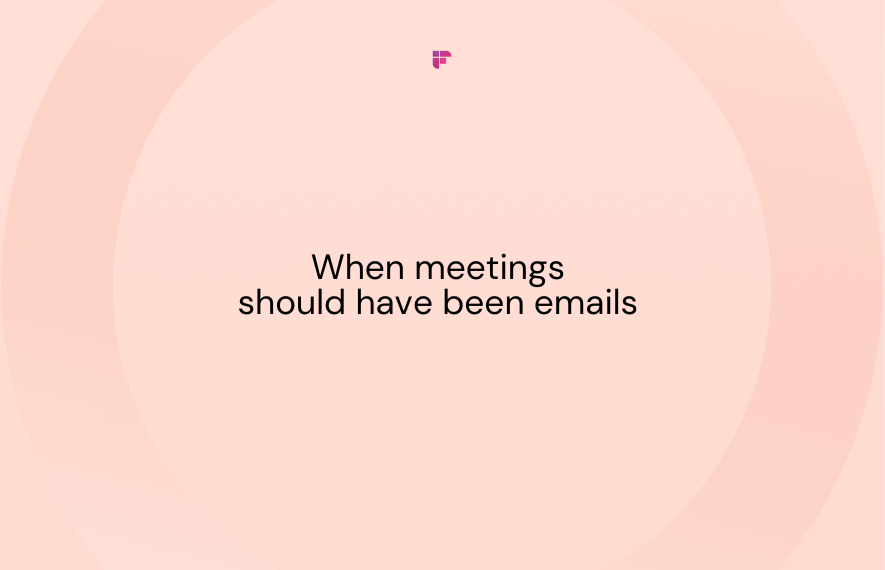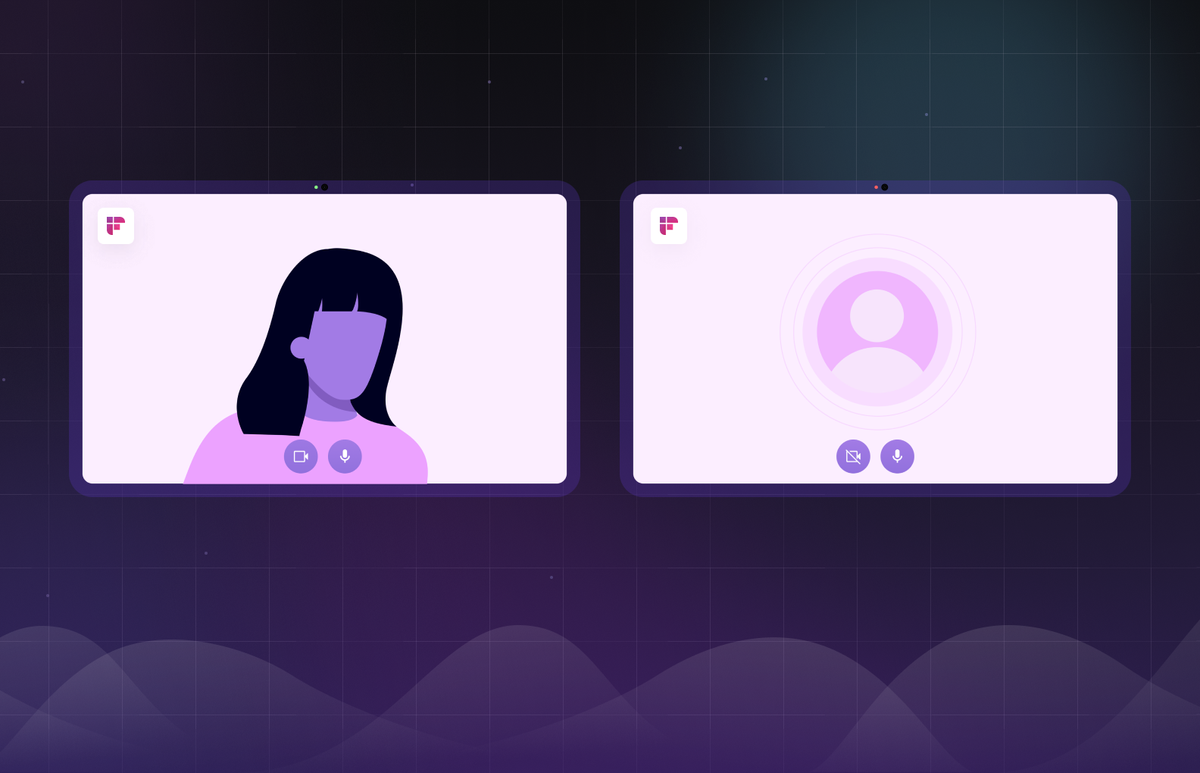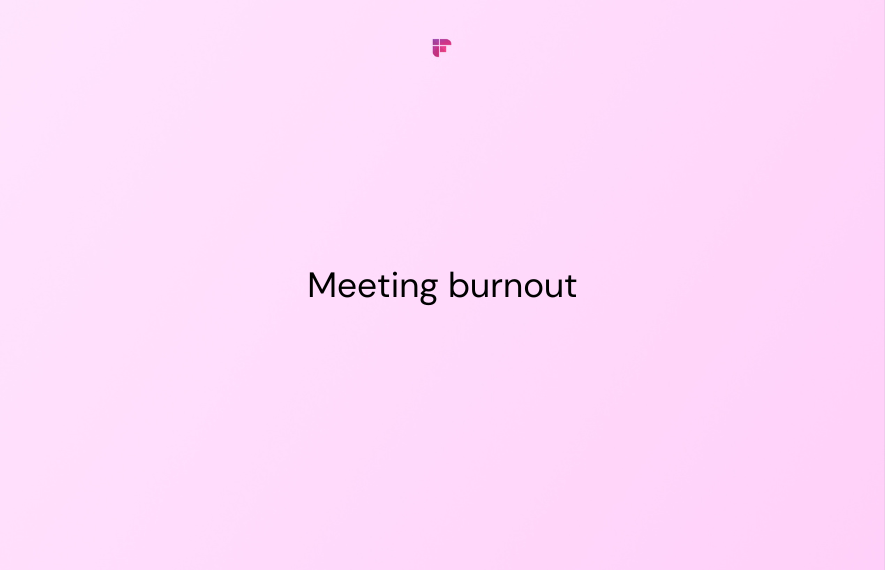Another day, another deluge of meetings. Back-to-back calendar blocks looming over you. The thought of one more video call makes you want to scream.
Relatable? Well, you're not alone.
Meeting burnout is real, and it's rampant. Employees everywhere are overwhelmed by meetings eating up their days, with studies confirming that, on average, people spend nearly 23 hours a week in meetings.
What if you can take back control and prevent meeting fatigue from draining the life out of your work? Read on to learn simple but powerful ways to ease in-person or virtual meeting burnout.
What is meeting burnout?
Burnout is stress caused by continuous work without enough break time. Although it's not considered a medical condition, it can trigger health issues like depression and anxiety.
Meeting burnout represents a specific category of burnout your team might face, often linked with "Zoom fatigue" from too many online meetings. However, it can also stem from excessive face-to-face meetings, particularly in a stress-filled workplace.
Explained: The reason behind burnout
Kelly P. Gabriel and Herman Aguinis, in the paper titled, How to prevent and combat employee burnout and create healthier workplaces during crises and beyond, created a job demands-resource model that explains the reasons behind burnout. This applies to people feeling exhausted during meetings, as well.
They observed that high job resources and low demands lead to employee engagement, marked by energy and enthusiasm. In contrast, low resources and high demands result in burnout, characterized by exhaustion and negativity.
High demands and resources can cause both engagement and burnout simultaneously. Lastly, low demands and resources create apathy, low engagement, and burnout.

10 signs of meeting burnout
The first step to addressing meeting burnout is to identify it.
While meetings are crucial for collaboration and communication, an oversaturated schedule can leave your team feeling drained and unproductive.
Be an active observer and watch for these 10 signs of meeting burnout so you can make necessary changes and improve their well-being:
- Heightened tiredness
- Focus and work slump
- Low morale
- Frustration
- Overwhelm
- Multitasking
- Meeting Reluctance
- Physical Stress
- Disengagement
- Absences and departures
Heightened tiredness
After meetings, if your team members seem especially worn out or show signs of irritability, it could be a sign of mental exhaustion, a common symptom of meeting burnout.
Focus and work slump
A decline in concentration during meetings or noticeable procrastination on tasks afterward can indicate that your team is overwhelmed by the frequency of meetings.
Low morale
Diminished enthusiasm or a lack of ambition in your team members might be due to feeling overburdened by a heavy meeting schedule, reducing their overall satisfaction with work.
Frustration
An increase in short tempers and negative interactions within the team can often result from the continuous pressure and stress caused by successive meetings.
Overwhelm
If your team appears to struggle with processing the information presented in meetings, this could be information overload, impairing decision-making capabilities.

Multitasking
When team members start to multitask during meetings, it's a sign they might be trying to cope with a high workload and can't engage fully with the meeting content.

Meeting Reluctance
If you notice a general sense of dread or resistance towards upcoming meetings, this is a strong indicator of burnout and a signal that your team may need a break from the current meeting rhythm.
Physical Stress
Physical symptoms like persistent headaches, muscle tension, or sleep disturbances in your team members could be manifestations of the physical strain caused by frequent meetings.
Disengagement
A lack of active participation or a withdrawal from meeting discussions often suggests that team members are experiencing emotional exhaustion and disconnection.
Absences and departures
An unusual increase in the number of team members taking sick days or a higher turnover rate can indicate that the demanding meeting schedule is taking a toll, leading to burnout.
How to tackle meeting burnout
Meeting burnout doesn't need to be an enduring issue. Address it by reconsidering how meetings are conducted, fostering better online meeting experiences, and capturing meeting discussions accurately.
Here's a look at several strategies to combat meeting burnout:
Schedule fewer meetings
Meetings are vital for team dynamics and communication, but consider whether a meeting is the best format for each discussion. Some conversations might be more effectively handled via a Slack channel or email.

Sticking to a well-structured agenda for discussions that merit a meeting can keep things concise and prevent attention from waning.
Design effective agendas
The use of an agenda is not reserved for the boardroom; it's a powerful tool for any meeting. Meetings can become more engaging and manageable when participants know what to expect and when they may be called upon.
Try these free agenda templates.
By allowing employees to contribute to the agenda and take turns leading the discussion, meetings can become more inclusive and interactive, potentially alleviating meeting fatigue.
Implement an AI notetaker
Detailed note-taking is crucial for many meetings, especially where minutes must be formally recorded. Fireflies.ai offers an automated solution, removing the burden of manual note-taking.
Fireflies.ai allows everyone in the meeting to participate fully without the distraction of capturing every detail. Moreover, it creates comprehensive transcripts and summaries, ensuring that even those who couldn't attend are quickly brought up to speed.

Relax video requirements
The constant pressure to engage visually on video calls can be exhausting, so providing an option to participate with video off can relieve many.
This permission can reduce the fatigue associated with being on camera and allows participants to engage in the meeting from a setting that may be more comfortable or less distracting, like taking a walk or sitting outside.

Have fun in meetings
It's easy to get caught up in pursuing productivity and overlook the importance of team bonding and enjoyment. Integrating fun elements like icebreakers, games, or casual socializing into meetings can lighten the mood and improve engagement.
For teams working in a hybrid environment, alternating between virtual and in-person meetings and organizing occasional retreats or team-building activities can keep meetings from becoming stale and stress-inducing.
Establish clear action items
Post-meeting follow-ups with defined action items and distributing meeting notes or summaries can foster a sense of clarity and purpose. When action items are identified during the meeting and tracked with Fireflies.ai, team members are likelier to engage with their tasks and maintain productivity.
Learn how to use Fireflies.ai to create customized meeting summaries for your next meeting.
Beat meeting burnout with Fireflies.ai
Meeting burnout stems from constant stress caused by an overload of meetings. Employees suffering from burnout may become irritable and apathetic and struggle with normal work. The solution lies in improving meeting quality and reducing quantity.
Fireflies.ai can transform team meetings through automated note-taking and action item tracking. With Fireflies.ai, you'll spend less time taking notes and finishing meetings, feeling accomplished and focused. When allowed, Fireflies can also attend meetings on your behalf and send meeting notes with actionable summaries directly to your email.
Experience better meetings and less burnout. Try Fireflies.ai free and elevate your team's productivity today!
Up next, we look at the benefits of using Fireflies.ai in detail and how this AI notetaker can help you achieve greater heights of meeting productivity and collaboration efficiency.








